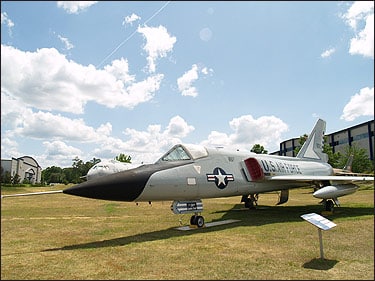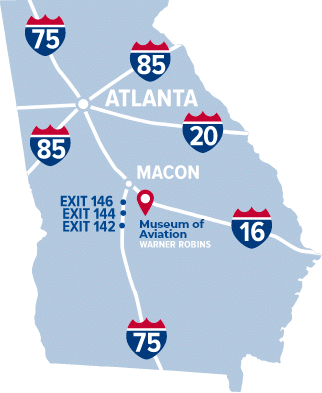The F-106 all-weather interceptor was developed from the Convair F-102 Delta Dagger. Originally designated the F-102B, it was redesignated F-106 because it had extensive structural changes and a more powerful engine. The first F-106A flew on 26 December 1956, and deliveries to the Air Force began in July 1959. Production ended in late 1960 after 277 F-106As and 63 F-106Bs had been built.
The F-106 used a Hughes MA-1 electronic guidance and fire control system. After take-off, the MA-1 could be given control of the aircraft to fly to the proper altitude and attack position. Then it could fire the Genie and Falcon missiles, break off the attack run, and return the aircraft to the vicinity of its base. The pilot took control again for the landing.
The Warner Robins Air Logistics Center was responsible for all program and logistics support to the communications, MA-1 fire control and missile systems for the F-106.
The aircraft on display was delivered to the USAF in September 1960. It served with the 318th and 48th Fighter Interceptor Squadrons during its service career before being retired in 1982. It was moved to the Museum for display in 1992.












